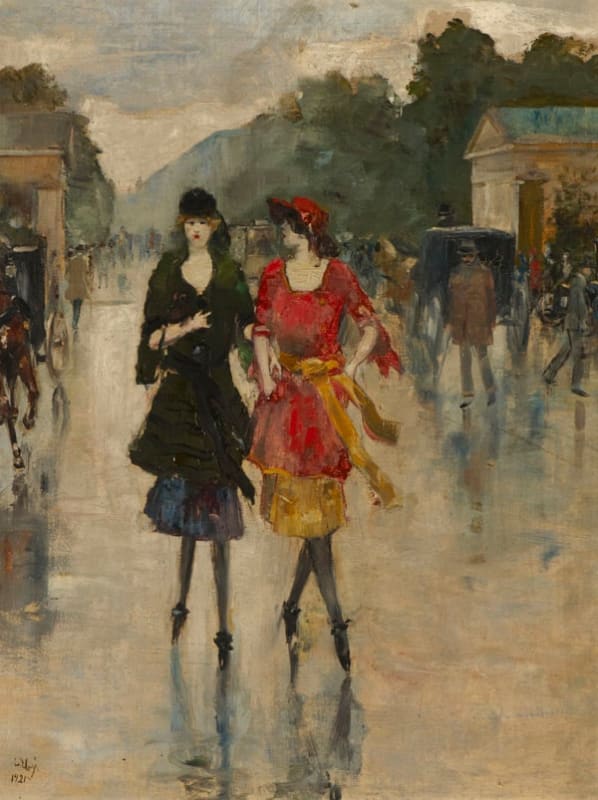Impressionist painter and printmaker Lesser Ury (né Leo Lesser Ury) was born into a Jewish family in Birnbaum, Kreis Birnbaum, Prussia (now Międzychód, Poland) on 7 November 1861; his father, a baker, died during his childhood and the family relocated to Berlin. Ury was initially apprenticed to a merchant before leaving to study painting at the Kunstakademie in Düsseldorf, and then in a succession of European cities: Brussels, Paris, Stuttgart and Munich. In Paris, he developed a fascination with the modern metropolis and nocturnal urban life, the subject matter for which he is most celebrated. He settled in Berlin in 1887, holding his first exhibition there in 1889. Despite a hostile reception, Ury was championed by the artists Adolph von Menzel and Max Liebermann, and was subsequently awarded the Michael Beer prize by the Berlin Academy, which enabled him to visit Italy. In 1893 he joined the progressive group of Munich Secession artists, before returning to Berlin in 1901. He subsequently exhibited with the Berlin Secession in 1915 and 1922, when, during a major exhibition of 150 of his paintings, he was honoured as ‘the artistic glorifier of the capital’ by the mayor of Berlin. His rising reputation was marked in 1920 by the publication of a book by Karl Schwarz, part of the series ‘Jüdische Bücherei’. Ury painted in oil and pastel – excelling in the latter medium - and produced landscapes, cityscapes – often in the rain and at twilight - and interiors, painted in an Impressionist manner.
Lesser Ury died in Berlin, Germany on 18 October 1931. He is represented in international collections abroad including the Alte Nationalgalerie, Berlin, Germany and Galerie Ludorff, Düsseldorf, Germany; the Hecht Museum, University of Haifa, Israel; and the Ben Uri Collection in the UK.


